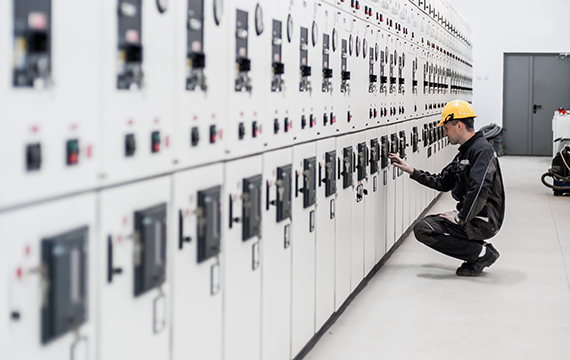HV Switchgear Types: Are You Choosing the Right One?
Introduction
What is High-Voltage Switchgear?
High-voltage switchgear is a critical component of any electrical power system. Its primary purpose is to control, protect, and isolate electrical circuits. It consists of a combination of circuit breakers, disconnectors, fuses, instrument transformers, and busbars that work together to ensure the safe and reliable operation of the power grid. In simple terms, it acts as the heart of the electrical network, managing the flow of power and quickly cutting off the supply in case of a fault to protect valuable equipment and personnel.
The Role of HV Switchgear in Power Grids
From power plants to end-users, electricity travels through a complex network of transmission and distribution lines. High-voltage switchgear plays an indispensable role in this process. It ensures power is effectively directed to the correct areas and, more importantly, reacts swiftly to abnormal conditions like short circuits, overloads, or ground faults. By isolating the fault point, it prevents the issue from spreading across the entire grid, thereby maintaining a continuous and stable power supply.
Main Types of High-Voltage Switchgear
Air-Insulated Switchgear (AIS)
Air-Insulated Switchgear (AIS) is the most traditional and widely used type. As the name suggests, it uses air as its primary insulating and arc-quenching medium. The components, such as circuit breakers, disconnectors, and busbars, are typically installed in an open-air environment.
- Advantages: Lower manufacturing cost, simpler design, and easier to maintain and inspect.
- Disadvantages: Requires a large footprint, is susceptible to environmental factors (like moisture, dust, and pollution), and has a lower safety rating compared to other types.
Gas-Insulated Switchgear (GIS)
Gas-Insulated Switchgear (GIS) is a modern, compact solution. It seals all live components (e.g., circuit breakers and busbars) inside a grounded metal enclosure filled with sulfur hexafluoride (SF6) gas. SF6 gas has exceptional insulating and arc-quenching properties, which allows for a much smaller overall device size.
- Advantages: Extremely compact design, requires minimal space, offers high reliability, is resistant to environmental contamination, and provides excellent safety.
- Disadvantages: Higher initial cost, requires specialized handling and maintenance due to the SF6 gas, and environmental concerns are associated with SF6’s potent greenhouse effect.
Hybrid Switchgear
Hybrid Switchgear combines the benefits of both AIS and GIS. It typically encloses core components like circuit breakers and current transformers in a GIS module, while exposing busbars and other elements to the air. This design aims to strike a balance between performance and cost.
- Advantages: More cost-effective than a pure GIS installation while being more compact than AIS, leveraging the strengths of both technologies.
- Disadvantages: Can be more complex to install and maintain than a pure AIS system.
How to Choose the Right High-Voltage Switchgear
Selecting the correct high-voltage switchgear requires a comprehensive evaluation of several factors to ensure optimal performance for your specific application.
- Application and Environment: Will the equipment be installed indoors or outdoors? In harsh environments like coastal, polluted, or humid areas, the sealed design of GIS offers superior protection.
- Space and Footprint: In space-constrained areas like urban substations, the compact design of GIS is an ideal choice. In contrast, AIS may be more cost-effective in rural areas with ample space.
- Cost Analysis: Beyond the initial purchase price, consider long-term operational and maintenance costs. GIS has lower maintenance needs but a higher upfront investment.
- Maintenance and Reliability: Due to its sealed design, GIS is less susceptible to environmental influences, so its maintenance requirements are significantly lower than AIS. For high reliability and low maintenance frequency, GIS is the better option.
- Safety and Environmental Impact: GIS is the preferred choice for applications requiring the highest safety standards. At the same time, the environmental impact of SF6 gas needs to be considered, along with potential alternatives or recycling measures.
BYYOU High-Voltage Switchgear Solutions
At BYYOU, we are committed to providing our clients with industry-leading high-voltage switchgear solutions. Our product line includes a wide range of switchgear types and specifications designed to meet your diverse project needs. Whether you require traditional air-insulated switchgear or compact and efficient gas-insulated switchgear, we offer high-quality and reliable products.
We not only provide equipment but also expert consulting services to help you select the most suitable solution based on your specific application, budget, and technical requirements.
Conclusion
Choosing the right high-voltage switchgear is crucial for ensuring the long-term stability of your power system. Whether it’s the traditional air-insulated switchgear (AIS), the modern gas-insulated switchgear (GIS), or the balanced hybrid switchgear, each type has unique advantages and use cases.
Before making a decision, it’s essential to understand the characteristics of each technology and evaluate them against your project’s specific needs.
Want to learn more about the BYYOU high-voltage switchgear solutions? Feel free to contact our team of experts—we would be happy to assist you.







